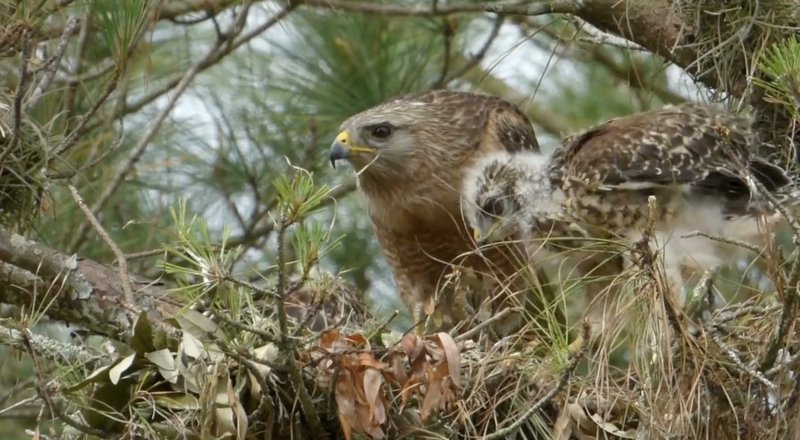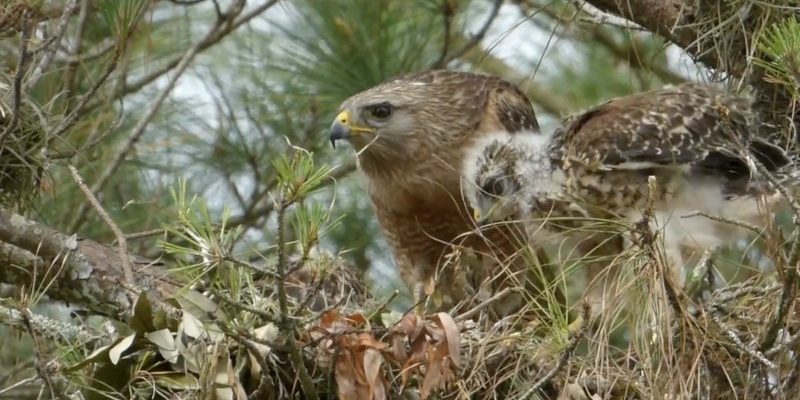
Imagine a world where the skies are empty, devoid of the graceful flights of hawks. It sounds pretty gloomy, right? Conservation programs are working tirelessly to ensure that doesn’t happen. From community outreach to habitat restoration, these efforts are vital. Let’s dive into how various groups are rallying around hawks to protect their future.
Understanding the Importance of Hawks
Hawks are more than just fascinating birds to watch; they serve as key indicators of environmental health. When you see a hawk gliding above, it’s a sign that the ecosystem is functioning well. They help control the population of small mammals and insects, keeping nature’s balance in check. Their presence means that their habitat is thriving.
Here’s the thing: when hawks start to struggle, it’s often a warning for us. Habitat destruction, pollution, and climate change can lead to declines in their populations. This may reflect broader environmental issues that could eventually affect many species, including humans. That’s why protecting hawks isn’t just about saving a bird; it’s about preserving our planet’s health.
Types of Conservation Efforts
There are many ways conservationists work to protect hawks. Some programs focus on creating and maintaining habitats, while others involve direct actions to save particular species. Let’s explore a few notable efforts.
- Habitat Restoration: This involves rehabilitating areas where hawks might have lost their homes due to development or agriculture.
- Community Education: Teaching local communities about the importance of hawks can foster respect and eagerness to protect them.
- Policy Advocacy: Conservation groups often campaign for laws that protect hawks and their habitats.
Each of these efforts plays a critical role in ensuring that hawks have suitable places to hunt and nest. Imagine community members rallying together, planting trees, and creating awareness. It’s a collective effort that shines brightly in the fight for these birds.
Legal Protections for Hawks
Legal protections can be a game-changer in conservation. In the U.S., Hawks are protected under the Migratory Bird Treaty Act, which makes it illegal to hunt or capture them without a permit. This legislation has been crucial in helping hawk populations recover from past declines.
Additionally, there are various federal and state laws aimed at conserving their habitats. Protected areas, like national parks and wildlife refuges, serve as safe havens for hawks to thrive. It’s like giving them a cozy home free from human threats.
However, laws alone aren’t enough. They need dedicated enforcement and public support to ensure these birds are safe and their habitats remain intact. It’s a reminder that we all have a part to play in advocacy efforts, whether it’s through volunteering or simply spreading awareness.
The Role of Technology in Conservation
Technology is changing the game for conservationists. Imagine using GPS and satellite tracking to monitor hawk movements. This helps researchers understand their migration patterns, breeding habits, and how they interact with their environment.
Another exciting innovation is using camera traps, which allow for non-invasive observation of hawk populations in the wild. This data is crucial for making informed decisions on how to protect these birds.
Here’s the thing: technology isn’t just about facts and figures. It can also help raise awareness. Apps that let everyday people report hawk sightings or share photos can engage the public in conservation efforts. When technology and passion collide, amazing things can happen for our feathered friends.
Community Involvement and Education
Community involvement is a cornerstone of successful conservation efforts. Local groups often organize events to educate people about the importance of hawks. Workshops, nature walks, and school programs are just a few examples of how communities can get involved.
When locals understand the role of hawks in their ecosystems, they’re more likely to support conservation initiatives. You might find people planting trees or volunteering for cleanup projects, creating a habitat where hawks can thrive.
Moreover, educating future generations is crucial. Wildlife clubs in schools can inspire kids to appreciate nature and become stewards of the environment. Who knows? The next big conservationist might be inspired by a school project about hawks!
Challenges Facing Hawk Conservation
Despite all the fantastic efforts to protect hawks, challenges persist. Urbanization is one of the biggest threats. As cities expand, hawks lose their hunting grounds and nesting sites.
Climate change is another major player in this game. Changing weather patterns can impact their food sources, migration habits, and breeding cycles. Imagine trying to find dinner when the buffet keeps changing locations—that’s what hawks face every day.
Finally, poaching and illegal trapping are ongoing problems. While legal protections exist, enforcement can be tricky. This is where public awareness and support become vital. If communities rise against illegal activities, it can create a safer environment for hawks.
How You Can Help
Want to make a difference for hawks? There are plenty of ways to get involved!
- Volunteer: Join local conservation groups that focus on hawk protection.
- Spread Awareness: Talk to friends and family about the importance of hawks and their habitats.
- Participate in Citizen Science: Report hawk sightings or take part in research projects.
Even small actions can lead to significant change. Whether it’s a simple conversation or joining a community project, every bit helps. Remember, saving hawks is a team effort, and every team needs dedicated players!
Closing thoughts? Conservation is a journey, and protecting hawks is just one part of a much larger story. By coming together, we can ensure these amazing birds continue to grace our skies for generations to come. So, let’s champion their cause together—after all, a world without hawks just wouldn’t be the same.

